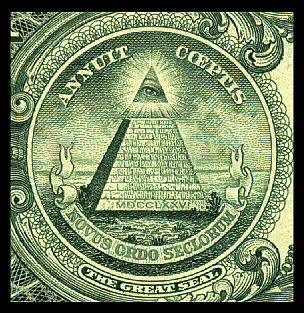Posted on 12/12/2011 4:33:44 PM PST by SunkenCiv
|
|
|
| GGG managers are SunkenCiv, StayAt HomeMother & Ernest_at_the_Beach | |

|
|
If these were arrows pointing to colossal statues of David and Solomon, complete with captions like "This one is David, This one is Solomon", there are morons who would publish a series of papers over their remaining years attempting to show that these were made by Canaanites. |
|
|
|
|
Again, they have no clue.
Probably used to hold up tables or other objects, this could have been a fast food place for all we know.
V is for “Victory”, “Vendetta”, and “Victoria’s Secrets”.
We Jews always love a good choice.
My “V” would be “Victoria Principal” with a sidebar “V” as in “Va, Va, Va Boom!”
I know I am going to get flamed for this, but I think it might have been Chinese Take-Out.
lol. That is as much a possibility as anything else at this point.
Giant bird footprints?
Part of an old game of some sort?
"Looks like a baffle, a barrier that can be penetrated but reduces the speed of entry. I like the idea that panels of some kind were inserted in the slots. Baffles are flow directing vanes or panels. Useful for keeping out invaders, corraling livestock, or even for controlling the movement of air or even light and sound. Until they find some supporting artifacts, the specific use will be uncertain."
Could it have been a flow and direction control for an aqua duct? Timbers in the slots and a movable gate from the post hole? Or like here in TX a cattle chute.
It looks to me as if the angular structures were used to seperate interlopers and the clear areas the shootIng lanes.
LOL! I had a Jewish friend of mine who told me that Chinese Take-Out was actually developed by Herb Lebowitz, from the Bronx. And, his nephew Lyman came up with the fortune cookie. LOL
I am pretty sure the fortune cookie was born in San Francisco early in the 1900’s as a gimmick.
Alpha and Omega?
Probably used in conjunction with some sort of wooden structures placed in the slots for measuring ephahs of grain in a standardized manner for delivery to the priests or the king.
People delivering ephahs of grain would want to know that there was a standard way of measuring what they owed or offered, and this may have served that purpose.
Because this was inside a building it probably did not concern animal sacrifice.
It is perfectly in line with the then ISO 800 BC Compliant standards for pointing at every day objects in the room...Door, window, table, emergency exit and so on.

It`s a giant counterfeiting operation.

Best illustration* of what I mean that I could find.
I KNOW I've seen sack holders that had an upright, with a pair of angled struts on the bottom to support it, and another above. (They were metal; these would be wooden, so probably would have a smaller post on each front corner.) A gunnysack was hung over the upper struts U lipped over the rear upright joint; the bottom seam rested on the floor.
One person stood at the 'open' end of the V-base, and held the top-front of the sack taut, while it was being filled, then the top of the sack was flipped off the support, and tied or sewn shut.
The floor notches would keep the stand from both "walking" as sacks were filled; and from splaying.
The legs of the V notches in the floor (judging from the man's lower legs/lower arms) appear to be a popular guesstimate of a cubit.
The way they are placed, it looks like it would be convenient for one person to stand between the apexes, and verify how much was in each, as they were filled. The offset would keep said overseer out of the way of the fillers.
*It is an Indian hand operated, portable grain cleaner.
I’ve read a lot of archaeology magazines and it seems that everything they find was used in some fashion in a religious ritual. It’s rarely a kitchen or a plain old pot or bedchamber, etc.
Not sexy enough for the donors, I reckon.
Interesting.
If the guesses as to dates in the article are correct, it could be a tax collection station for the Kingdom of Judah.
It may also have been used to collect tribute from conquered peoples. King Jotham of the Kingdom of Judah conquered the Ammonites and collected from them ten thousand kors of wheat and ten thousand kors of barley. A kor was ten ephahs.
There must have been collection points and measuring equipment for receiving the taxes and tribute.
Disclaimer: Opinions posted on Free Republic are those of the individual posters and do not necessarily represent the opinion of Free Republic or its management. All materials posted herein are protected by copyright law and the exemption for fair use of copyrighted works.